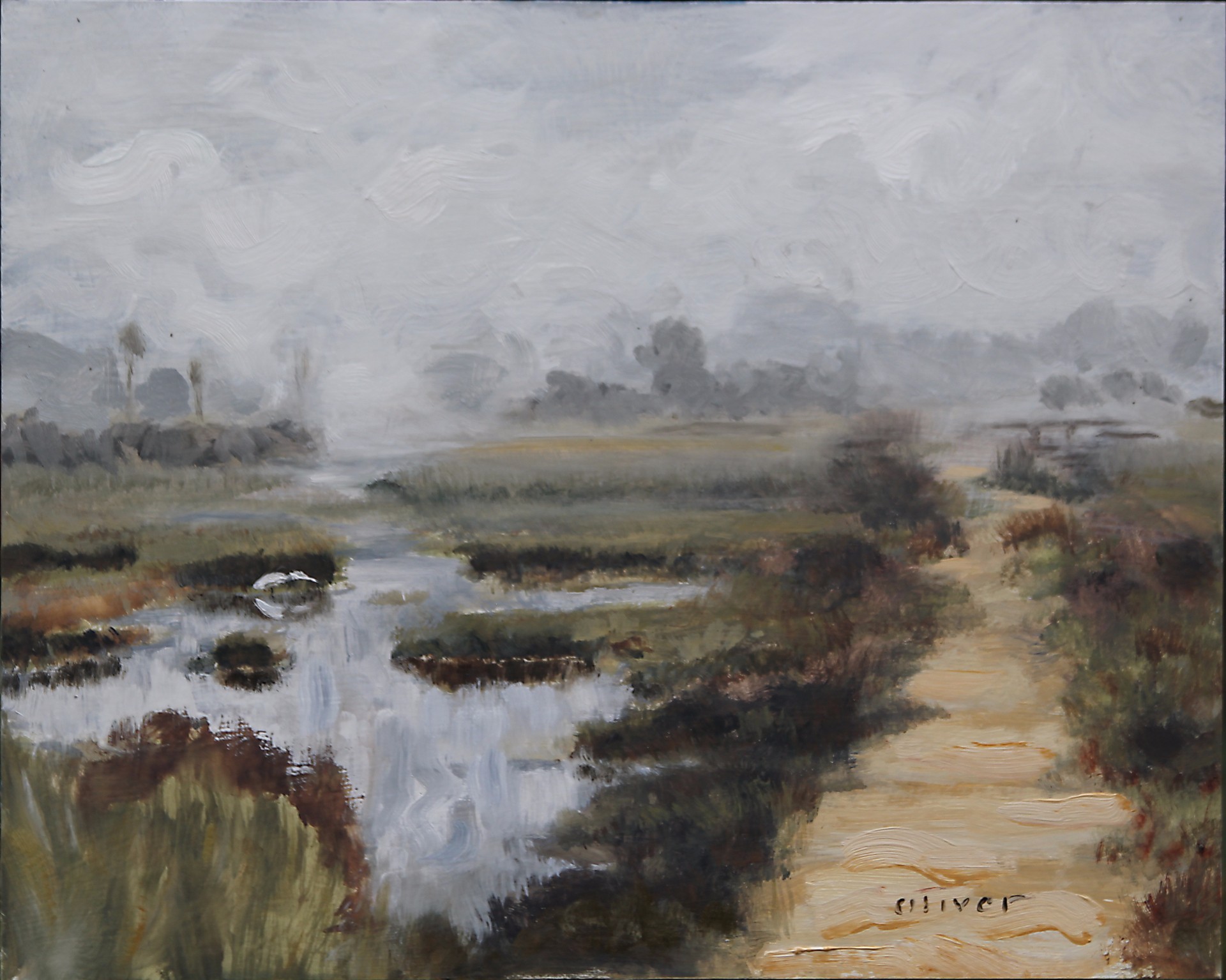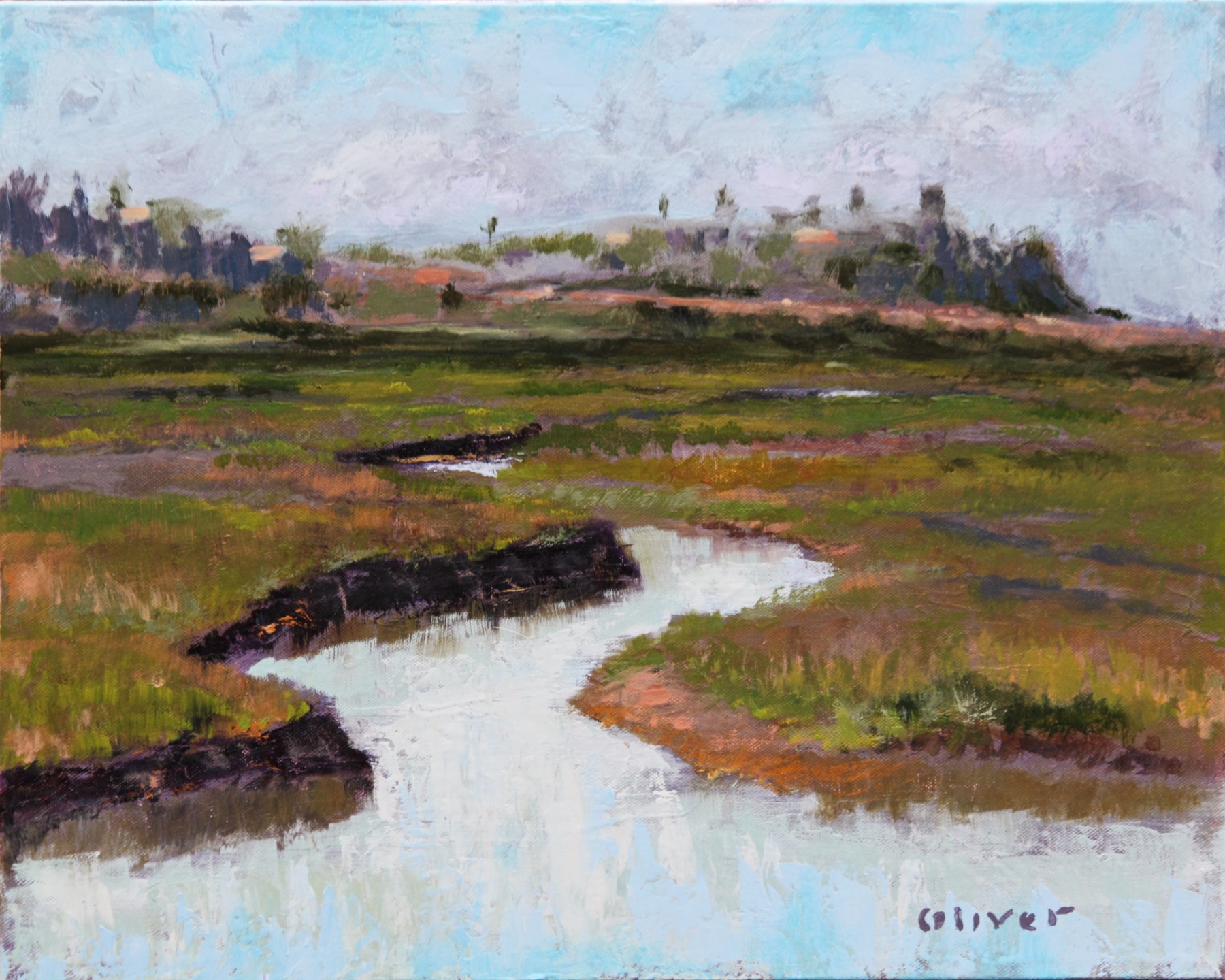
The act of plein air painting is an acquired taste.
Many artists see plein air painters at their easels in the open air, capturing the light and essence of a beautiful, natural scene before them and think, “I will do that some day!”
Little do they know that painting in the open air has its own specific challenges that make it much different from attacking a canvas in the relative comfort and the steady, even lighting of their studio. Still, plein air painting can be very rewarding for the creative soul and is well worth the effort to develop some proficiency in it as an art. Following are five “tips” for the beginning plein air painting admirer that just may help them become a plein air aficionado.
1.) Start small.
It is far easier to manage a small canvas and a small kit when a beginner, rather than diving in to tackle large canvasses or elaborate outdoor easels. When beginning, you are testing the waters and it makes sense to keep it simple to find if plein air is the right avenue for you. Expensive kits and brushes are not necessary to start. An inexpensive half box french easel and 6×8 in. canvas panels or hard boards and a cheap set of hog bristle, long-handled brushes are a good beginning.
2.) Use artist grade paints.
Student grade paints will cause more frustration than learning as a beginner. They have difficult consistency and do not mix or thin well as artist grade paints do. There are some very good quality artist grade oil paints, such as Gamblin and Rembrandt that are reasonably priced.
3.) Use a limited palette.
A split-primary palette is a good palette for the plein air painter (even for the seasoned veteran). A split primary consists of a both a warm and cool, single pigment choice for the three primary colors–Red, Yellow and Blue. Add a black, yellow ochre, and transparent red oxide and you have a very good start with only 9 colors and of course titanium white. Later on, you may wish to expand your palette with some specialty or convenience colors. Learn what the symbols and numbers mean on the paint tubes. There is much to learn about pigment properties such as transparency, light fastness, and mixing qualities.
4.) Composition is half the battle.
A poorly composed painting, no matter how adroitly painted, will read as a failure. Read up or web search for terms such as “rule of thirds,” “the golden section,” “avoiding tangents,” “focal points,” “lost and hard edges” among others. It’s always good to have a “center of interest” in your composition but that certainly doesn’t mean it should be plopped dead center in your canvas, which is generally the wrong thing to do. Avoid placing elements along the side of the frame or bisected by the outer perimeter of your composition. And finally, remember…rules are meant to be broken but break them consciously and for good reason, rather than by accident.
5.) Consider water mixable.
As a beginner, you have the opportunity to forego the hazards and hassles of working with oils and solvents with your paints. There are some excellent water mixable oil paints that will allow you to make professional quality paintings that cannot be distinguished from those made with the traditional oil and solvent media. Cobra and Holbein are two brands with good reviews for water mixable. They also offer water mixable mediums and impasto gels. As a beginner it may make sense to commit to learning and working from the beginning, with the water mixable products, rather than delve into the world of mineral spirits and turpentine.
These are just a few sound pieces of advice for the beginner who is enchanted by the sight of a painter standing at an easel in the open air of a natural scene. That’s where it begins…with the will to do, to be, to create outdoors at an easel–making the first steps to acquire your “kit,” then actually taking it to an inspiring place and taking the leap. There is a great deal to learn, but it is “so worth” every minute you will spend painting “en plein air!”



































